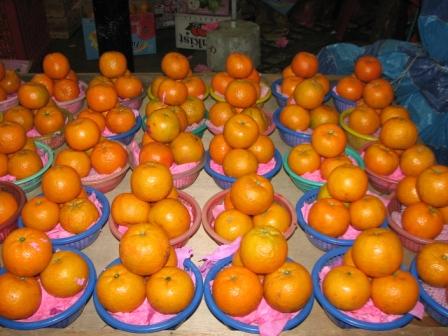
| Home | Chinatowns of the world | Festivals | Culture | Food Culture | History | Countries |
| Chinese Religion | Tours | Sitemap | Documentaries | About | Contact |
SymbolsSymbols function as cultural shorthand to communication cultural notions and fulfill aesthetic, ritual and social functions. Here we explore symbols in the context of Chinese culture and history. Symbols are almost always expressed through material culture such as furniture, clothing, fabric, ceramic, ritual ware, and other artifacts. Symbols can be expressed via common objects and subjects such as flowers, plants, animals, food and even Chinese characters. Examples include longevity peaches ,寿桃, and Bean Paste pastery,豆沙饼. Famous personalities from Chinese history and Chinese legends often also become symbols of the collective values they represent or are associated with. For Magistrate Bao’s 包公, association with justice and Guan Gong’s 关公, association with brotherhood. When symbols are used on an object or object used as symbols, it invests social meanings and can restrict the use and access of the object to specific individuals, groups or occasions. This can be sanctioned legally or socially. Dragons,龙, are symbols of imperial authority and robes with dragons especially the front facing 5 claws dragons are reserved for the exclusive use of Chinese emperors, the Son of Heaven, 天子. Phoenix, 凤, are always associated with dragons and is the symbol of the empress. Other senior royalties are entitled to use different designs and classification of dragons. Unauthorized used of dragons symbols can be interpreted as treason or proof of rebellion attracting capital punishment. Another example is the double happiness, 双喜, used during weddings or the longevity symbols used for birthdays. Food, stationary and other articles decorated with such symbols are reserved for use during weddings and birthdays respectively. By analyzing symbols on artifacts, we can decipher the meanings, aspirations and values embodied. It reveals the circumstances in which an artifact was created, why it was created and what it means to the owner as well as his dreams and aspirations. In other words, we can reconstruct the social profile of a person or time period through the analysis of symbols. Putting different pieces of artifacts from the same time period offers insights to notions such as; the nature of social stratification, the relationship between social classes and the common values that bind them as a society. On the other hand, analyzing a series of artifacts across a time period tell us about important social, political and cultural shifts, nature of social change and how these are manifested through material culture. During times of political disintegration in China, official sanctions on symbols are often disregarded as regional powers attempt to emulate vestiges of power and authority. The use of dragons by traditionally non authorized groups became more prevalent and will be reflected in the material culture of that period. Among the general population, popular symbols reflect their hope for longevity, multiple off springs, happiness, success in examinations and prosperity. Once you understand the meanings of symbols on an artifact, you develop the ability to locate the artifact in its historical context and transform a material culture into a historical artifact. This information creates value for the artifact and reflects the historical memory embodied within it. Related articles:Guan Gong main pageCulture & Customs |
|
| Join us on | Youtube | |||
| Copyright © 2007-24 Chinatownology, All Rights Reserved. | ||||





